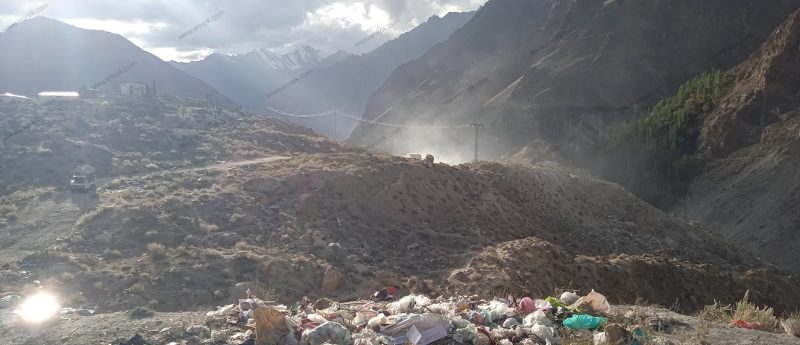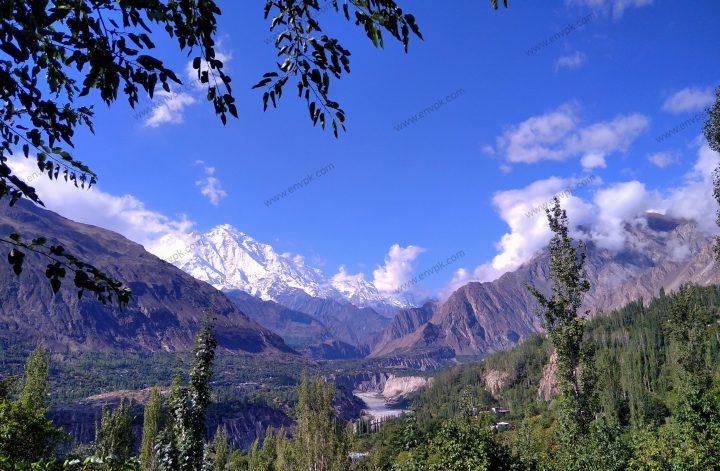Hunza Valley, a picturesque region surrounded by the Karakoram mountain range of Gilgit-Baltistan, Pakistan, is famous for its breathtaking and unparalleled beautiful landscapes, unique culture, and sustainable practices. However, with the passage of time, Hunza valley is facing many different challenges, and one of them is increasing pollution, due to tourism influx, new developmental projects, increasing population, insufficient resources and improper waste management. The valley’s remote location and challenging terrain pose significant obstacles to efficient waste disposal and recycling.
Check Out: Unique Animal Species Biodiversity of Gilgit-Baltistan Pakistan
Unique Plant Species Diversity of Gilgit-Baltistan, Pakistan
Land Pollution Causes In Hunza Valley:
Land Pollution: It is increasing rapidly, especially plastic waste and single-use plastics, has become a major concern. The abundance of plastic bottles, bags, and packaging materials is destroying the landscape, contaminates rivers and streams, and poses a threat to wildlife.
Developmental Projects: Unmanaged construction waste from new developmental projects is also contributing in increasing waste in the valley.
Open Dumping: The absence of proper waste managementand landfills has led to open dumping sites, where waste is left to decompose, releasing harmful pollutants into the air and soil.
Limited Recycling: Recycling efforts are very limited, with few facilities available to process and recycling waste.
Tourism: Increasing tourism, especially without proper planning and regulation, is causing significant waste generation and pollution. More tourists mean more consumption,this translates to more waste.Hotels produce large amounts of solid waste, including food waste, plastic packaging, paper products, and discarded amenities. Improper disposal of this waste can lead to littering and pollution of the surrounding environment.

Land Pollution Impacts Hunza Valley:
Threat to Natural Beauty: The accumulation of plastic and other waste along roadsides, and near tourist attractions degrades the visual appeal of the region and threatens its natural beauty.
Contamination Of Soil: Open dumping sites and improper disposal of hazardous waste contaminate the soil.
Biodiversity Loss: Toxic chemicals and increasing waste is causing problems for flora and faunaof the valley.
Human Health Hazards: Exposure to pollutants in contaminated soil can lead to many health problems.
Water Pollution Causes Hunza Valley:
Commercial Waste Water: The discharge of untreated wastewater containing heavy metals, toxic chemicals, and other pollutants into rivers lakes and water streams from non-domestic sources and hotels.
Sewage and Wastewater: Untreated sewage from households is also contaminating rivers, lakes and water streams with bacteria, viruses, and other pathogens.
Mining Activities: Mining operations can release toxic metals and other pollutants into nearby water sources through mine tailings and acid mine drainage.
Solid Waste: Increasing solid waste, including plastic bottles, plastic bags, microplastics, is also destroyed the beauty of water bodies and contaminating them.
Water Pollution Impacts Hunza Valley:
Human Health: Contaminated water is transmitting waterborne diseases which are causing illnesses in local communities, particularly among vulnerable populations like children and the elderly.
Chronic Health Problems: Long-term exposure to polluted water can lead to chronic health issues such as cancer, neurological disorders, reproductive problems, and developmental abnormalities.
Reduction of Clean Drinking Water: Water pollution and contamination in water makes difficult to access safe drinking water.
Loss of Biodiversity: Toxins and pollution in water is also harming fishes, plants, and other organisms.
Causes of Air Pollution Hunza Valley:
Vehicle Emissions: The increasing number of vehicles, including cars, trucks, and motorcycles, due to tourism and increasing pollution contributes to air pollution, especially in urban areas within the valley.
Dust and Construction: Construction activities are also causing increase in air pollution.
Wood Burning: Many households rely on wood-burning stoves for heating, especially during winter. This releases smoke containing particulate matter (PM2.5) and other pollutants into the air.
Air Pollution Impact in Hunza Valley:
Health Problems: Exposure to air pollutants can lead to respiratory issues, eye irritation and other health issues.
Climate Change: Air pollution contributes to climate change, which can have long-term effects on the region’s environment and weather patterns.
Addressing the Challenges – Solutions of Environmental Problems in Hunza Valley:
Lack of Infrastructure: The valley lacks a robust wastemanagementinfrastructure.While some efforts have been made to establishcollection points and composting facilities, these are often inadequate tohandle the growing volume of waste.
Tackling waste management and land pollution in Hunza Valley requires a multi-pronged approach:
Improved Infrastructure: Investing in a comprehensive waste management system, including collection points, sorting facilities, and composting sites, is essential. This may involve exploring innovative solutions like biogas plants to convert organic waste into energy.
Sustainable Tourism Practices: Promoting eco-tourism and encouraging responsible tourism practices among visitors can help minimize waste generation and environmental impact.
Government Support: The government of Pakistan and local authorities must play a pivotal role in providing financial and technical support for waste management initiatives in Hunza Valley.
Community Engagement: There are already many community level initiatives to reduce pollution in the valley; unfortunately these initiatives are not enough. The beautiful Hunza needs a long term planning with proper awareness campaigns for local communities and tourists about waste reduction, reuse, and recycling.Government collaborative community-based initiatives can Chempower residents to take ownership of waste management practices.
Check Out: Effect of Climate Change On Gilgit Baltistan of Pakistan
Transforming Gilgit: Sustainable Development and Conservation
Conclusion:
According to tourism department Gilgit-Baltistan, 16,500 international tourists and 986,000 domestic tourists visited different areas of Gilgit-Baltistan from January to December 20, 2024.
While Hunza Valley faces significant challenges in waste management and land, water and air pollution, it also presents an opportunity to showcase sustainable practices and environmental stewardship. With the government level and community-led initiatives, including national and international organizations, investing in waste management infrastructure, and promoting responsible tourism, with strict rules and regulations can preserve Hunza Valley pristine beauty and ensure a sustainable future for generations to come.
Also Check Out: List of 25 Major Glaciers Of Pakistan With Description




